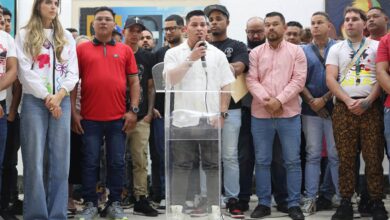Gasoline Subsidies in Latin America: A Regional Disparity
The help governments give citizens through education, food, and unemployment subsidies does not cause as much of a stir as gasoline. Since 2022 some countries have tried to eliminate it from their social programs.

Photo: WeStock
LatinAmerican Post | David García Pedraza
Escucha este artículo
Leer en español: Los subsidios de la gasolina en América Latina: una disparidad regional
The price of gasoline is an indicator of how healthy the economy in the country will be for citizens due to a simple reason: The transportation of food, belongings, etc. is based on oil. The costumers has to assume oil's price when they are going to purchase the product, even if they are only charged a couple of cents, and even in some cases they do not even stop to think about it. However, when the price of gasoline rises, little by little, the ordinary citizen will realize that the money that was enough to buy several things now only suffices for two-thirds or half of what they used to acquire.
With the last rise in gasoline at 600 pesos in Colombia (0,13 USD), the population is preparing to see an increase in various daily consumption products. In addition, buying or selling cars is becoming less profitable, both because of the fuel price and the taxes that owning a car entails. In the case of Bogotá, the monumental traffic jams exhaust citizens' patience. For this reason, the Government has recommended eliminating or targeting the gasoline subsidy due to this practice's fiscal losses for the national economy.
Colombia: Between the Elimination and Targeting of the Fuel Subsidy
The rise in the price of gasoline is a constant in the South American country. For consecutive months this fuel has yet to know a ceiling, which makes products even more expensive than consumers, mainly in large cities. They must acquire these resources at any cost, thus giving way to budgets that often cannot be maintained.
From the Ministry of Mines and Energy, it was announced that technical tables were installed to review how gasoline prices are calculated and to identify which specific cases this fuel can be subsidized. However, some experts in the field of hydrocarbons, such as Diego Mesa, former minister of Mines and Energy, expressed their concern about the selection of who to give a subsidy to and who could not cause resale and smuggling of this fuel in the country.
Also, the country's finances would be unstable because the fiscal gap left by this subsidy for 2022 was 37 trillion pesos (8,000 million dollars), a deficit that has yet to be overcome in 2023. Experts also remind the Minister of Mines, Irene Vélez, that if the price of gasoline is decided to be lowered in the country, what this action would create is nothing more than a loss of royalties from the oil companies for the nation in social investment.
Gasoline Subsidies in Latin America: A Region of Contrasts
With Venezuela known as the 'Mecca' of oil worldwide, one could imagine the country as a prosperous and wealthy nation. Even so, this idea is far from reality. With the economic sanctions that the United States imposed on Venezuela, especially by the Maduro government, this country faces economic instability daily, and gasoline does not escape this situation.
He Gasoline subsidy is based on 120 liters for cars and 60 for motorcycles monthly. The acquisition of this aid is made through dates stipulated by the government, depending on the completion of the license plate number of each vehicle.
In Central America, several countries have agreed to freeze gasoline prices or subsidize this resource, such as Honduras, Guatemala, and El Salvador. In the case of Costa Rica, a single fee for fuel has been set.
In the case of Brazil, during the Bolsonaro presidency, the taxes that made gasoline more expensive were eliminated. However, since March in the Lula government, they have been resumed despite the positive results of their elimination and the little economic stability.
For their part, the governments of Ecuador and Panama have not been able to reduce gasoline subsidies due to numerous demonstrations, most of all during 2022. However, Ecuador had projections for this year of targeting these subsidies depending on the behavior of the price of crude oil, a maneuver similar to that of Colombia.
It may interest you: FED: What does the rise in interest rates represent for the Latam economy?
Cheap Gas Doesn't Equal Affordability
In the case of reviewing the price of gasoline between various Latin American countries, there are some surprises. Venezuela, Bolivia, Ecuador, and Colombia are the nations where the cost of petrol is the cheapest. Ironically, it is where it is most difficult for citizens to pay for this resource.
In nations where inflation is not so overwhelming and there is tense financial stability, it is where the gallon of gasoline costs more, such as Uruguay, Chile, and the Dominican Republic. The case of Chile it is since this nation has a Fuel Price Stabilization Fund, and its actions work, contrary to Colombia. This country also has this fund but has yet to obtain the expected results.
Gasoline is a resource on which a large part of the economy and many means of transport depend. Perhaps with this situation, the financial system is trying to move this fossil fuel aside and replace it with more ecological resources.




